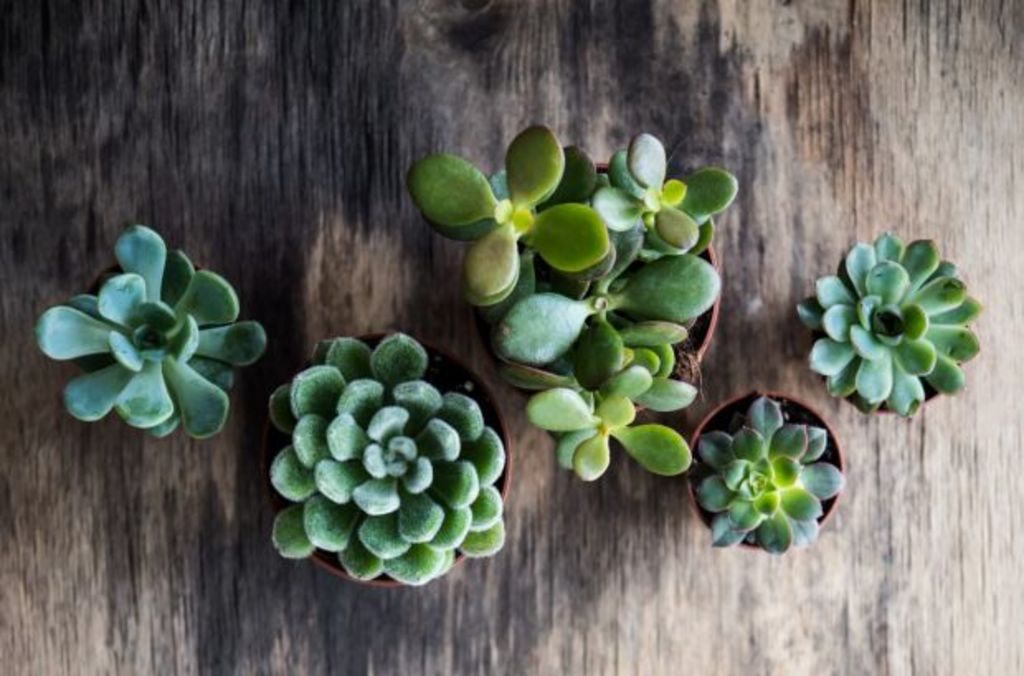How to keep succulents happy and healthy indoors

Based on Instagram alone, one might think growing a succulent is as easy as placing one in your bathroom and crossing your fingers.
Turns out there is more to succulent care than just the bare minimum (and the bathroom is probably the worst environment for such plants), but a thriving indoor succulent collection is easily attainable.
We asked plant experts what succulents are best for keeping indoors and their tips to keep them happy year-round.
What exactly is a succulent?
Succulents are a group of plants generally characterised by a thickened appearance which helps them retain water in dry climates.
This water is usually stored in one of two places – its plump leaves (in the case of leaf succulents) or a thick stem (in the case of cacti, which are also part of the succulent family).
What types of succulents are best for keeping indoors?
Not all succulents are conducive to being kept indoors, especially if your home is particularly dark or damp.
Georgina Reid, founder of The Planthunter and spokesperson for Plant Life Balance, recommends the jungle cactus (Rhipsalis species), haworthia (Haworthia species) and the mother-in-law’s tongue (Sansevieria trifasciata) as her top three succulents for keeping indoors.
Unlike other succulent varieties, these plants all tolerate low-light conditions and require little water.
Aside from the jungle cactus (which is in the cactus family but has evolved to grow in rainforests), Reid advises against keeping cacti indoors.
“Think about it – these are plants that have evolved to love desert conditions. When they’re placed in a dark indoor environment and watered too much, they’ll just turn to mush,” she says.
The favourite indoor succulents of Alana Langan, co-founder of botanical wares studio Ivy Muse, include the chain of hearts (Ceropegia woodii), donkey’s tail (Sedum morganianum) and the Mexican snowball (Echeveria elegans).
Where should I place succulents around my home?
The amount of light each succulent needs varies depending on the species, but most will generally benefit from a sunny location.
Jacqui Vidal from Ivy Muse says, “Your best bet is to find a sunny window sill or spot close to a window which is often bathed in light. Without this key requirement, your succulent will simply not thrive.”
While some varieties will be content with a shadier spot, the previously mentioned bathroom is always a no-go succulent zone.
“I will scream if I see another cactus in a bathroom on Instagram or Pinterest!” Reid says.
“Sure, it looks nice, but think about the plant for a second – a bathroom is hell for a cactus. It’s a combination of all the things it hates most (water, shade and humidity).”
How often do I need to water my succulents?
Water is the biggest killer of indoor succulent plants. With that in mind, rather than abiding by a set watering schedule, it’s better to water succulents only when their soil is dry.
To determine this, simply stick your finger into the potting mix. If it’s damp, don’t water. If it’s dry, water.
“Make sure all these plants don’t sit in saucers filled with water either. Once you’ve watered it, wait half an hour for the mix to drain, and then tip the excess water out,” Reid says.
How do I keep my succulents looking healthy over time?
Careful observation and some additional care will keep your succulents happy for years to come.
“The shape of a succulent can help communicate to us, once we know what to look for,” Langan says.
“If your succulent seems to be growing to one side [due to chasing the sunlight], you can help it to retain a more consistent shape by turning the pot 90 degrees every day during spring and summer.”
Regular doses of liquid organic fertiliser during the growing season are also recommend to provide plants with essential nutrients.
Finally, Reid suggests taking all indoor plants on regular “holidays” outside to receive fresh air and rain. Just make sure the conditions outdoors are sheltered and similar to those inside.
“And love, don’t forget love,” Reid says. “It’s a very important ingredient for happy plants.”
We recommend
We thought you might like
States
Capital Cities
Capital Cities - Rentals
Popular Areas
Allhomes
More
- © 2025, CoStar Group Inc.







